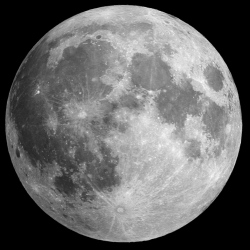
New research potentially rewrites our modern ideas on the moon’s origin, as researchers put forth a new theory for how the Earth and moon started their relationship: An impact that nearly obliterated the Earth in the solar system’s early days, and the mixed-up material left behind condensed to form our home and our moon.
A colossal cosmic smash-up might not sound all that radical. The currently accepted theory is that a protoplanet the size of Mars, a hypothetical world named Theia, shoulder-checked Earth and chipped off a chunk of material. That hunk of space junk eventually became the moon, according to the aptly-named “giant impact hypothesis”. The impact set the Earth spinning in five-hour days, which eventually slowed to the 24 hour days we experience now.
This hypothesis has a few problems, the biggest of which lies in Lunar samples from the Apollo missions. These show chemical signatures identical to Earth’s rocks, but different from other Solar system bodies, and therefore very likely different from Theia’s makeup. If Theia grazed the Earth just enough to grate off a moon-sized chunk, the moon should have retained some of this alien world’s chemical signatures while the Earth was left relatively unscathed.
Led by Matija Cuk of the SETI institute, the authors of a new study published in Nature set out to solve these problems more elegantly, with one big smash. According to their findings, Theia did in fact make quite an impact on the young Earth. Instead of grazing by and breaking off a chunk of rock, the new theory posits, Theia actually hit our planet pretty much head on.
This high-energy collision vaporized or melted enough of our planet that it mixed with the materials in Theia. This molten bunch of space debris eventually settled down into two (relatively) identical bodies: The Earth and the moon. The Earth began with a two-hour day, its axis pointing towards the Sun, but over tens of millions of years, it slowed and the moon drifted farther away.
The new theory could also help explain away another potential problem with an impact-related lunar origin. If the moon was formed by a single thwack of an impact from Theia, it should have ended up orbiting around the Earth’s equator. Instead, it spins at a slight angle. But an impact hard and head-on enough to vaporize a significant portion of the Earth would have set the planet wobbling. Perhaps when the moon spun out of the molten Earth, it aligned with a position our planet eventually wobbled away from.
